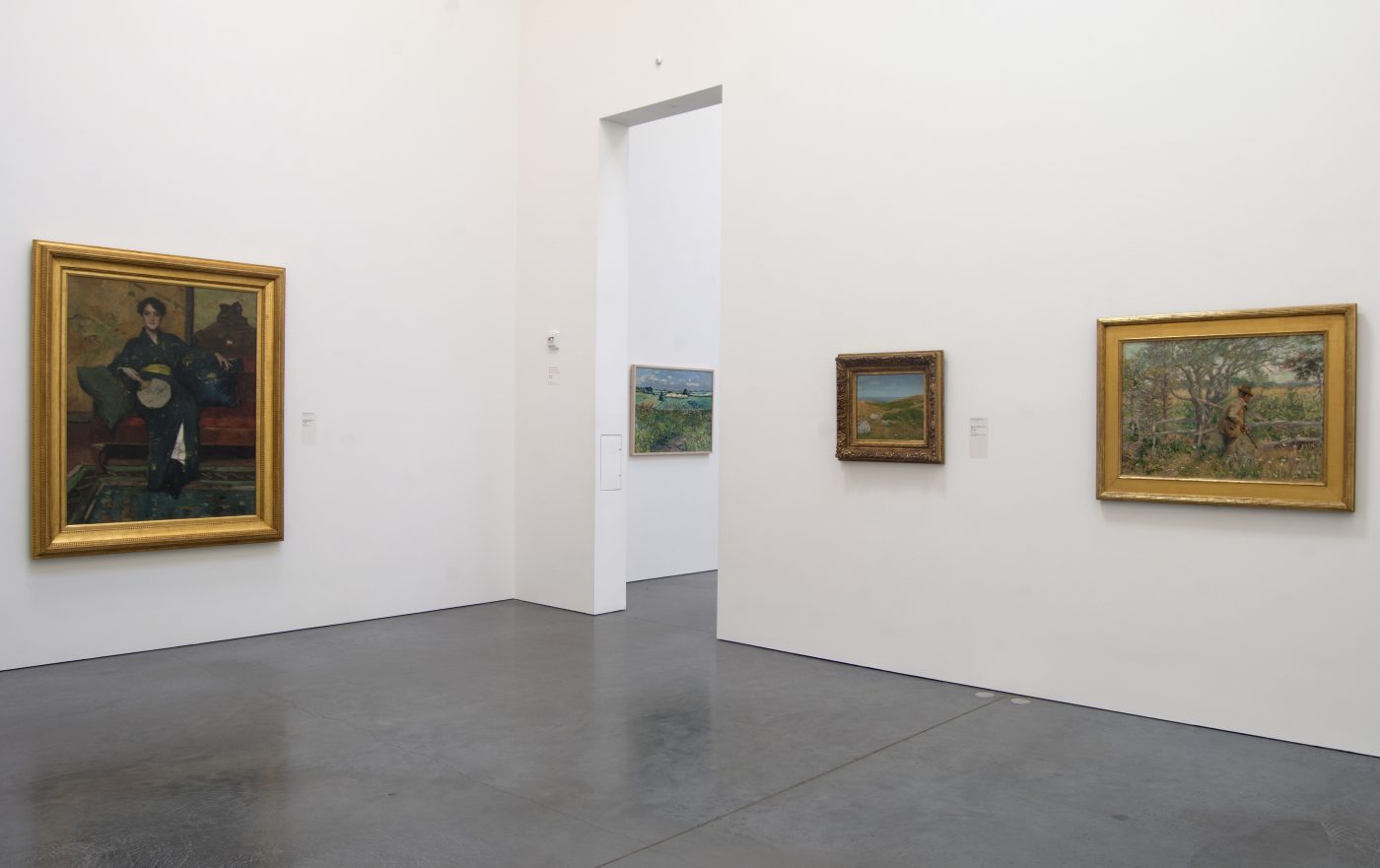William Merritt Chase first came to paint the Shinnecock Hills in 1891. He was invited by Mrs. Janet Hoyt, who proposed opening a summer art academy based on the plein-air schools then popular in Europe, a strategy she devised to enhance the importance of Southampton as a summer resort. Chase’s own schooling at Munich’s Royal Academy and a decade spent traveling abroad made him one of the most worldly and sophisticated American painters and the most renowned teacher of his day. He was the logical choice to become founding director of the Shinnecock Hills Summer School of Art. Chase had begun teaching at New York’s Art Students League shortly after returning from Germany in 1879; in 1896 he began his own school, the Chase School of Art, later the New York School of Art, and over the years taught hundreds of young artists, such as Georgia O’Keefe, Charles Demuth, and Rockwell Kent.
Chase’s students came from a wide range of backgrounds, and women consistently outnumbered the men in the summer classes. The young woman depicted in The Golden Lady has just put down her sketchbook to look directly at the viewer. She was most likely a student at Shinnecock in the summer of 1895 and accompanied Chase to Spain in the spring of 1896 to study Velásquez and the great Spanish masters at the Prado Museum. Arthur Burdett Frost was forty years old and a successful illustrator when he decided to study with Chase. “I have started painting with Chase and I think he will do me a power of good,” he wrote to a friend. “He will get me to loosen up my blamed tight fist, and get some go into my work.” Reynolds Beal attended the 1893 summer session at Shinnecock, along with his brother Gifford. The young men boarded at Mrs. Harlow’s and his painting, Captain Harlow’s Lot, Southampton, well demonstrates Chase’s statement that successful subjects for painting could be found in the most ordinary places. One of Chase’s earliest pupils at the Art Student’s League was Irving Ramsey Wiles, who later traveled with him in Spain (1905) and Italy (1910). Only a decade younger than Chase, the two artists developed a lifelong friendship, often selecting the same subject matter, as with the models in kimono-like dressing gowns, a popular motif with both painters.


